Life is art and art is life ..... or are they just two sides of the same coin? It is figures such as Salvador Dali who bring much-needed light to this shady, eternal question. The Catalonian artist from Cadaqués, one of the most globally important in art history, made himself and his life a joint work of art that has endured over time, complementing his magnificent visual oeuvre and revealing one of the most fascinating personalities of the 20th century. “The uniform is essential in order to conquer. In my entire life, rare have been the occasions when I've demeaned myself by wearing civilian clothing. I'm always dressed in my Dali uniform”. The artist reflected on these comments in his book Diary of a Genius, where his patent self-love jumps out from the page ~ an egocentric attraction that made him many enemies.
Dali: art, egocentricity and provocation
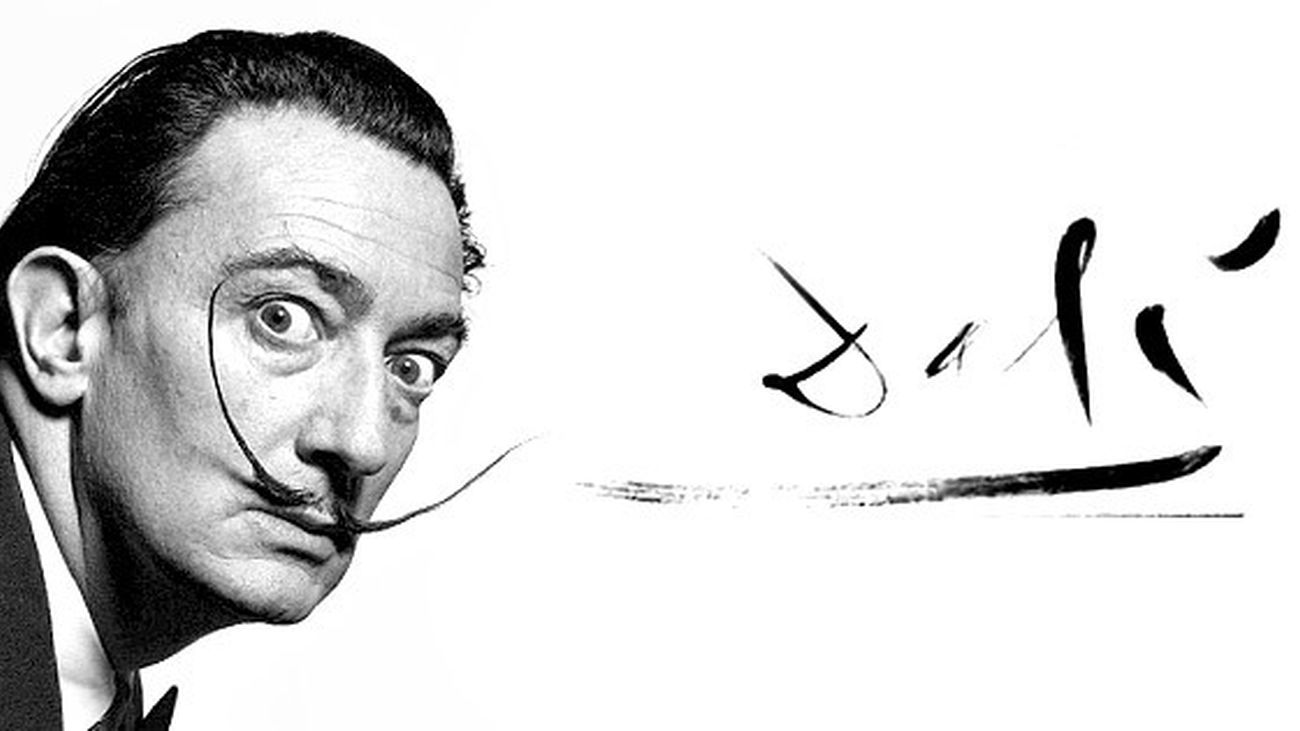
Portrait of Dali with signature. Poster for the exhibition "Dali" organised by the Reina Sofia Museum, Madrid in 2013 c/o Telemadrid.es
Life is art and art is life ..... or are they just two sides of the same coin? It is figures such as Salvador Dali who bring much-needed light to this shady, eternal question. The Catalonian artist from Cadaqués, one of the most globally important in art history, made himself and his life a joint work of art that has endured over time, complementing his magnificent visual oeuvre and revealing one of the most fascinating personalities of the 20th century. “The uniform is essential in order to conquer. In my entire life, rare have been the occasions when I've demeaned myself by wearing civilian clothing. I'm always dressed in my Dali uniform”. The artist reflected on these comments in his book Diary of a Genius, where his patent self-love jumps out from the page ~ an egocentric attraction that made him many enemies.
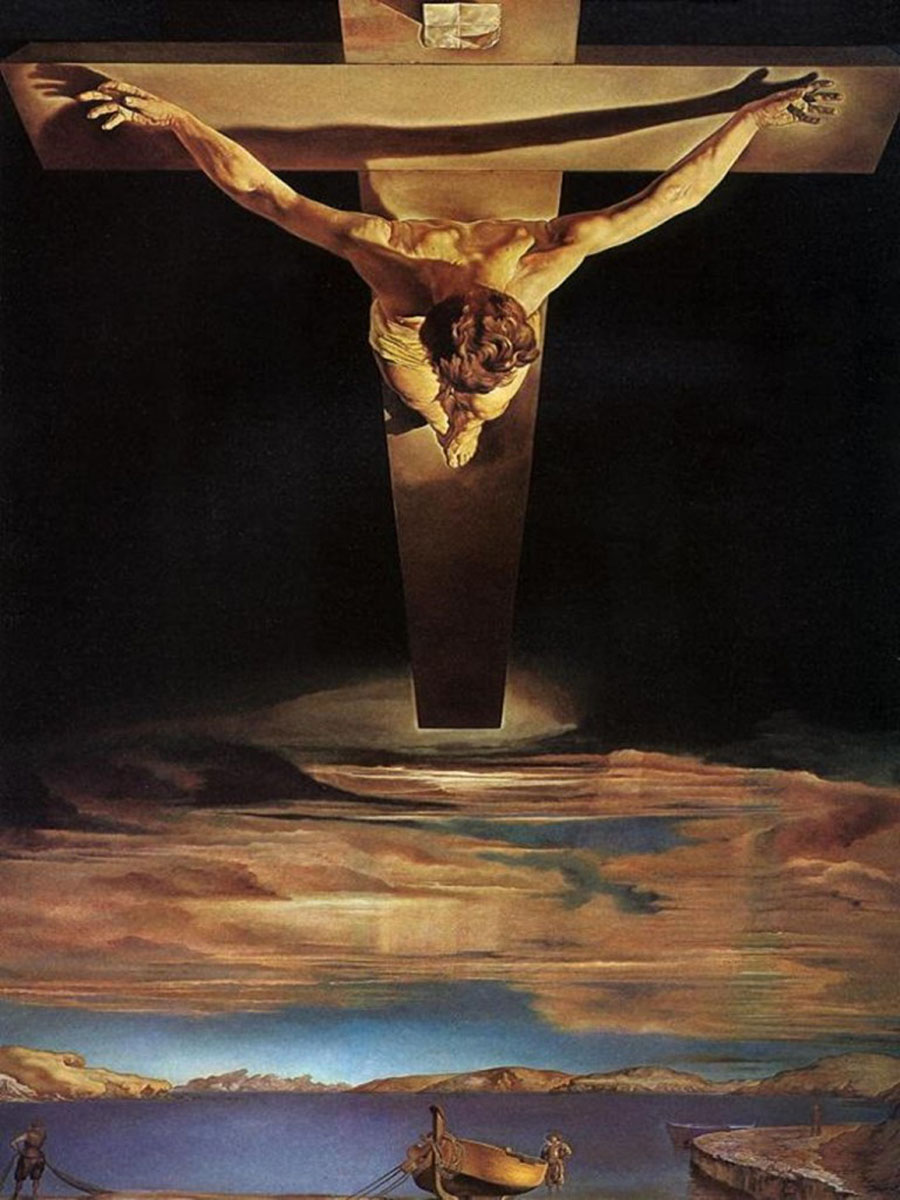
Christ of St John of the Cross (1951). Kelvingrove Art Gallery and Museum, Glasgow c/o Totenart.com
Controversy, mystery and genius were Dali's constant companions. As an artist, he left an immortal legacy; as a person, he gifted society his unforgettable persona; and as a writer, he produced an extraordinary, intimate and recently-revindicated body of work. Today, people queue around the block at exhibitions all over the world and any news concerning his life provokes huge interest. Dali collaborated with and/or had links with greats such as Garcia Lorca, Picasso, Buñuel and Hitchock, creating images and works that remain in our collective subconscious to this day. Accompanied and awed by the powerful character of Gala, his muse and wife til the day of her death, Dali forged his own particular, spectacular imagery that has passed the test of time and become an integral part of contemporary culture, generation after generation.
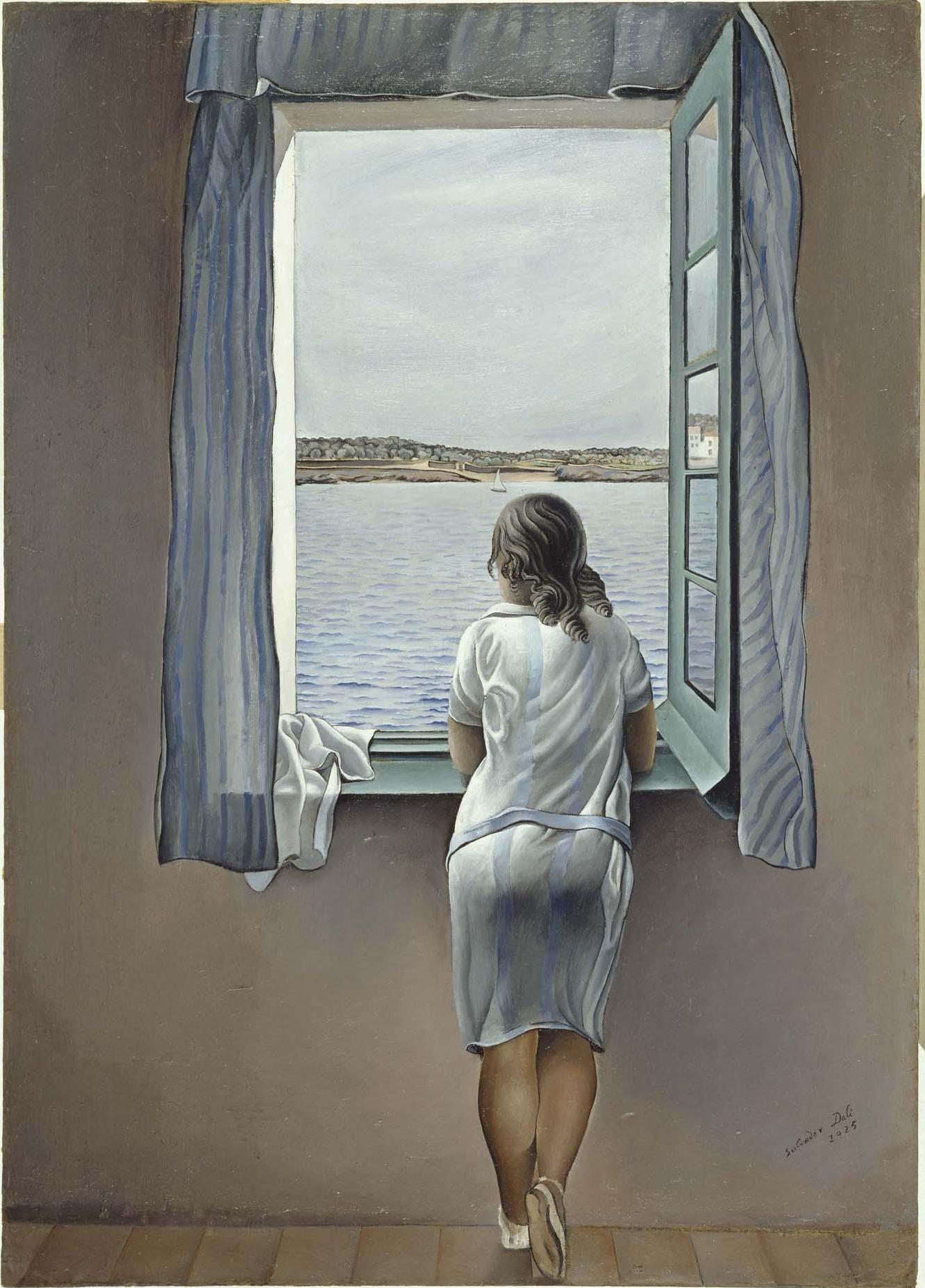
“Figure at a Window” (1925). Reina Sofia Museum, Madrid c/o Museoreinasofia.es
Early years: mediocre student and budding artist
Salvador Dali was born at the turn of the century in Figueres (Girona) on 11 May 1904 to parents Salvador Dalí Cusí and Felipa Domenech. His education began in 1908 in the local state school but his father enrolled him at the Hispanic-French Immaculate Conception College four years later. Dali turned out to be a mediocre student but, after coming into contact with Impressionism through the works of Ramon Pichot, his life takes a different turn. In conjunction with attending school, in 1916 he also begins drawing classes with the painter Juan Núñez.
In 1919 and at the remarkably young age of fifteen, Dali takes part in his first exhibition at Figueres Town Theatre. Unbeknownst to him, this was a moment that would eventually come full circle and culminate in the transformation of the building into the Dali Theatre-Museum, inaugurated in 1974. He also takes his first steps as a writer, something he was absolutely passionate about and that he often gave more relevance to than his plastic art.
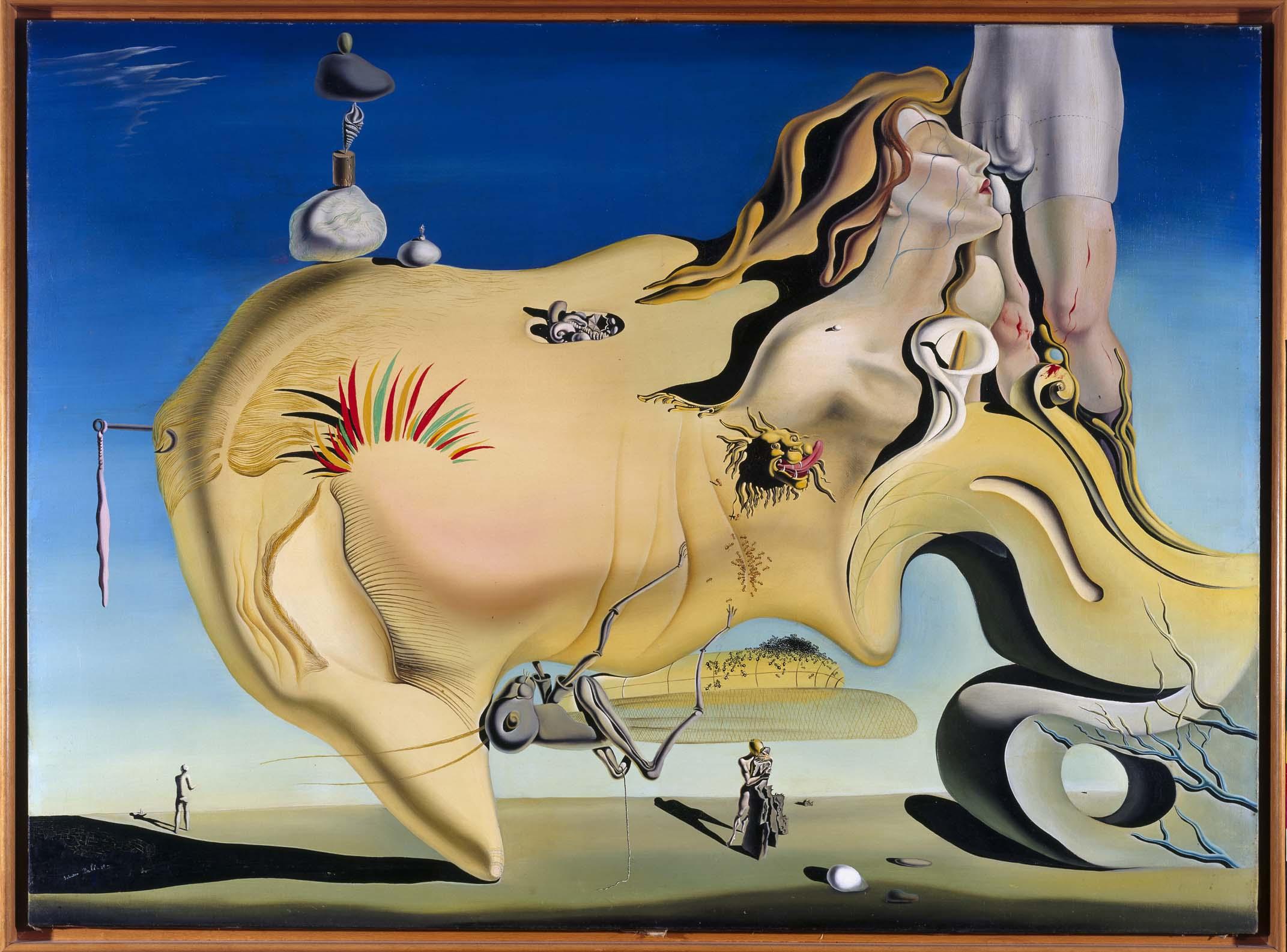
“The Great Masturbator” (1929). Reina Sofia Museum, Madrid c/o Museoreinasofia.es
From Figueres to Madrid: the Academy years
The father figure remained omnipresent in Dali's work throughout his whole life and it was his father who allowed him to train as an artist, on condition he studied at the School of Painting, Sculpture and Engraving at Madrid's Royal Academy of Fine Art. Dali willingly accepted. His mother's early death in 1921 saw her presence relegated to the background as his father remained the most important influence on his life. Their relationship was always plagued with confrontations, disagreements and subjugation but was also marked by Dali's profound admiration for his father.
During his training in the Spanish capital, Dali moved in the same circles as intellectuals, filmmakers and writers of the standing of Buñuel and Garcia Lorca, among others. In 1923, he was expelled form the Academy and returned to his birthplace, where he studied engraving techniques. In under a year, the budding artist had returned to Madrid and participated in his first exhibitions there. During this time, he renounced the avant-garde and pursued traditional Spanish and Italian painting. In 1926, he was expelled definitively from the Academy, returned to Figueres and devoted himself entirely to painting.
Film ~ “Un chien andalou” (1929)
Lorca and Gala: two people, two influences
The relationship between Dali and Federico Garcia Lorca has generated countless articles, speculation and controversy in equal measures. After the first few years of friendship, Dali begins to distance himself from Lorca for fear of being associated with the poet's political stance and his widely-known homosexuality. In 1929, Dali travels to Paris and comes into contact with Surrealist artists, which was to be a pivotal moment in his career. He immerses himself completely in a movement that alligns perfectly with his runaway imagination, his egocentricity and his impeccable pictorial technique. A year earlier, his film collaboration with Luis Buñuel, "Un chien andalou" was released in Paris, cinema being one of his passions and an art form to which he would return repeatedly in subsequent years, collaborating with revered names such as Alfred Hitchcock.
The summer that same year saw a decisive incident in the artist's life. He meets Gala, married at the time to Paul Eluard, when they stayed with him in Cadaqués. Gala leaves Eluard for Dali who would continue to show his deep devotion towards her for the rest of his life.
“I am surrealism”: the embodiment of a movement
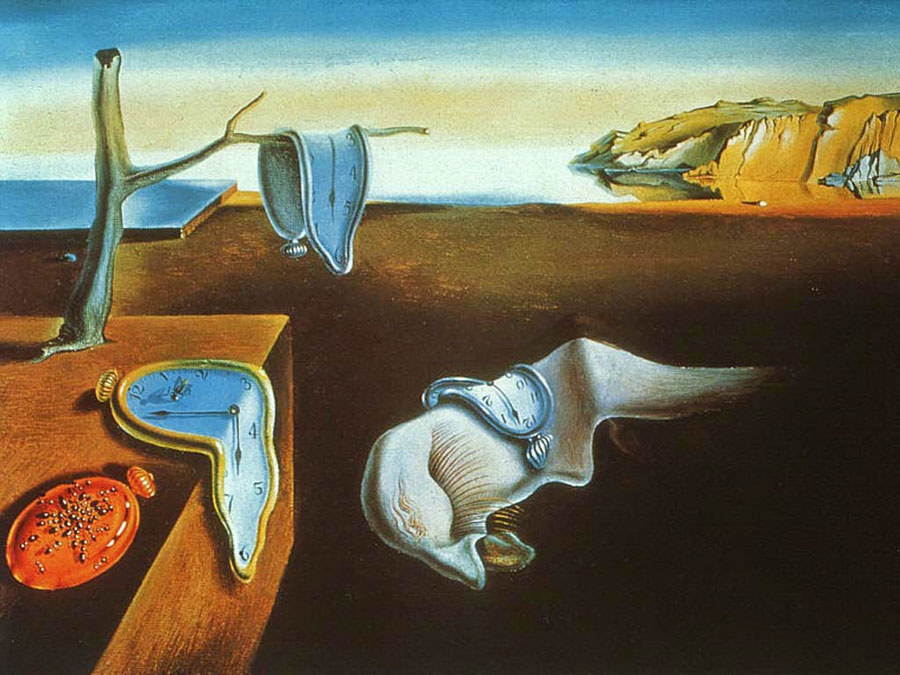
The Persistence of Memory (1931). Museum of Modern Art, New York c/o Artesubastas.es
Dali's commitment to surrealist philosophies and manifestations brought him success from the outset and he quickly became one of the leading exponents of the movement on the world stage, going so far as to proclaim that "I am surrealism". This was not, however, that far removed from reality: Dali had begun to transform his character, his surroundings and his physical presentation into a multi-layered, ever-changing work of art that would continue right up until his death. He even came up with his very own surrealist technique that he dubbed "the Paranoiac-Critical Method" and defined as "a spontaneous method of irrational knowledge based on the critical and systematic objectivity of associations and interpretations of delirious phenomena."
Over the following years, both Dali's personality and his art would become influenced by two great figures: Pablo Picasso, who he met around 1935, and Sigmund Freud, who he interviewed in 1938 thanks to writer Stephan Zweig's intervention.
Boom and bust: the years of decline

“The Temptation of St Anthony” (1946). Royal Museums of Fine Arts of Belgium, Brussels c/o Arteac.es
In the 1940's, Dali's work was beginning to enjoy worldwide recognition. This success distanced him from his old, compromised friendships but won him the favour of General Franco's dictatorship which welcomed him with open arms. His paintings and sculptures then began to show signs of repetition, as Dali renounced innovation in favour of what he knew full well worked for him and the public. His cult-of-self became another of his obsessions and, during the Swinging Sixties, he concentrated on creating his own museum in Figueres, convinced of its historical relevance. Also, from 1965 onwards, Dali began compulsively signing sheets of blank paper for future lithographs and his work became more confusing and disjointed. It was in 1975 that the artist's decline, in health and old age as well as his art, left no room for doubt, a fall culminating in Gala's 1982 death and Dali's seclusion first in Pubol Castle and later in the Galatea Tower.
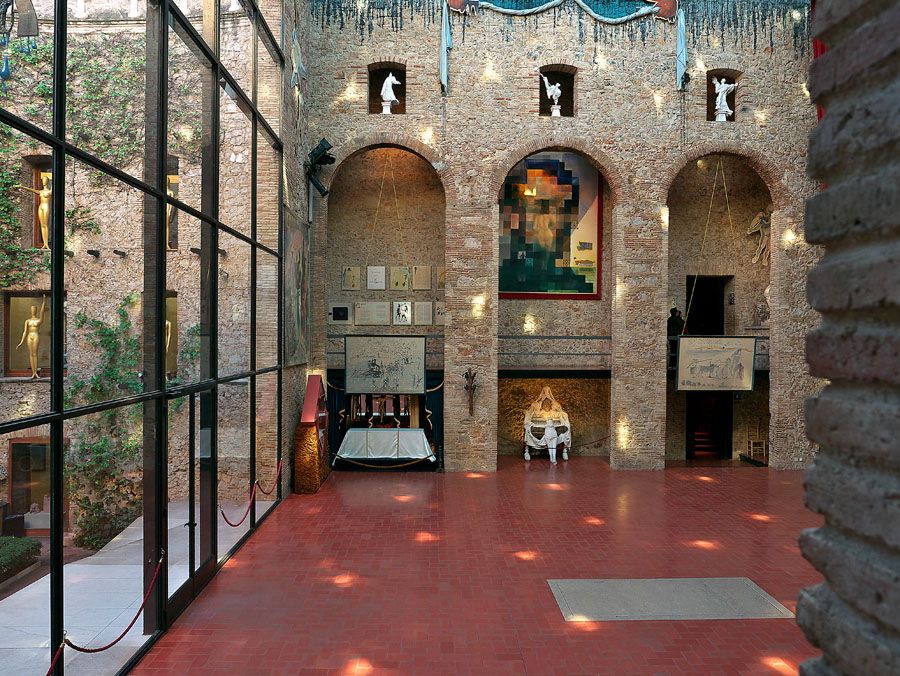
Interior of the Dali Theatre-Museum (Figueras), with the painting "Abraham Lincoln" c/o Wikipedia
Since the 1980's, any Dali exhibition, anywhere in the world, in the greatest contemporary art museums and galleries (such as the Pompidou Centre, Paris or the Tate Britain, London) have attracted huge crowds of visitors. The artist himself, however, was no longer interested in art and, ultimately, succumbed to the worst of his fears, death, and passed away in 1989.
Exhibitions
Exhibitions of Salvador Dali's work are events that spark international interest and attract hundreds of thousands of visitors. Since his first solo exhibition in 1929 until the present, the world's most important museums continue organising retrospectives showcasing the most intriguing facets of his life and work.
Salvador Dali (2012-13)
November 21st 2012 saw the inauguration of a Dali anthology exhibition at the Pompidou Centre in Paris which sold over 760,000 tickets, making it the second most successful ever recorded in the museum's history, after the previous Dali retrospective of 1979 which had attracted 850,000 visitors.
Dali (All of the poetic suggestions and all of the plastic possibilities) (2013)
In 2013, Madrid's Reina Sofia Museum opened what was considered one of the Spanish capital's most important exhibitions of the year: Dali (All of the poetic suggestions and all of the plastic possibilities). The retrospective comprised over 200 works and was one of the most extensive ever dedicated to the artist. In the words of Manuel Borja-Villel: “as opposed to the anecdotal character, we wanted to return to the essential Dali, the artist who is a fundamental figure in 20th century art."
Media: Dali (2015-16)
In 2015, the Gala-Salvador Dali Foundation managed to bring the Catalan artist's work to China in the form of a grand retrospective comprising over 200 multi-media pieces relating to Dali's life and work and including twelve paintings. It was to be the most important Spanish cultural event of the year in a country where surrealism was still largely unfamiliar to its curious audience.
Dali (2016-17)
China was not alone in the sights of the Gala-Salvador Dali Foundation. The 2016 Tokyo exhibition "Dali" gathered together pieces, many of them rarely seen before, from the world's three most important collections (The Dali Foundation in Figueras, the Reina Sofia Museum in Madrid and the Salvador Dali Museum in St Petersburg, Florida) along with other works lent by Japanese institutions.
Books
“The secret life of Salvador Dali”. Salvador Dali, 1942
Dali combined two of his passions in several of his books: writing and the cult of his own personality. This "false" autobiography centres on certain moments in his childhood and adolescence with much irony but not much respect for the truth. Dali recounts the journey from his early years as a student and teenager up to his fame as a world-renowned artist, imbibing each and every page with his inimitable personality.
“Les diners de Gala”. Salvador Dali, 1973
First published in the 1970's, “Les diners de Gala” is an absolute gem that Taschen Books decided to re-edit in 2016. Its pages contain a total of 136 surrealist recipes illustrated with photographs, drawings and collages by Dali. The recipes reflect the artist's powerfully vivid imagination, peppered with erotic references and with excess as their main ingredient. Dali's passion for food is evident here, reflected in the paraphernalia of the exotic dinner-performances organised by Salvador and by Gala.
“The Shameful Life of Salvador Dali”. Ian Gibson, 1998
Without a shadow of a doubt, Ian Gibson's biography of the persona and life of Dali is the most in-depth and exhaustive of those published to date. The Irish author's research brings to light a huge amount of hitherto undiscovered details as he constructs a complex narrative fabric that reveals vast areas of the complicated personality of the Catalan genius. Featured in its pages are the likes of Garcia Lorca, Freud, Picasso, his wife Gala and many other characters close to Dali, thus creating a fascinating, once in a lifetime mise-en-scène.
(Translated from the Spanish by Shauna Devlin)
- Salvador Dali: Biography, Works and Exhibitions - - Alejandra de Argos -



